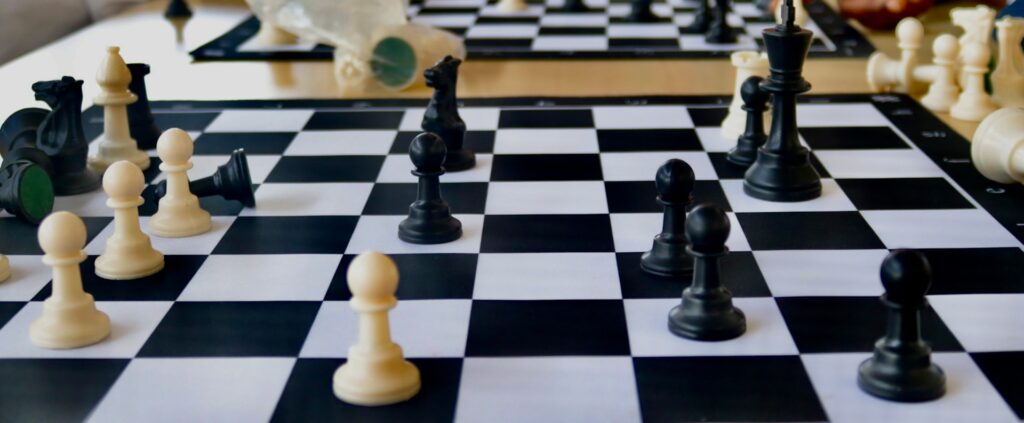Understanding the ELO Chess Rating System
To completely understand the world of chess, one must first master the game’s intricate strategies, tactics, and history. However, for those who aim at competitive play, one of the critical aspects that comes into focus is the ELO rating system.
Named after its creator Arpad Elo, this system is a cornerstone of chess rating, providing a standardized method for evaluating players’ skill levels. So let’s delve into the depths of the ELO rating system and explore its origins, mechanics, and significance in the world of chess.

Origins of the ELO System
The ELO rating system traces its origins back to the mid-20th century. It was created by Arpad Elo, a Hungarian-American physics professor and chess player. His goal was to make a more accurate method for ranking chess players.
However, before the invention of the ELO system, chess rankings were usually subjective. They were based on experts’ opinions or tournament results without a standardized framework for comparison.
Related: Komodo Dragon 3.2
The breakthrough of this system came in 1960 when Arpad introduced it in his book “The Rating of Chessplayers, Past and Present". Using principles from probability theory and statistical analysis, he designed a model that assigned numerical ratings to players based on their performance in competitive matches.

Mechanics of the ELO System
At the core of the ELO system lies a simple but elegant algorithm for calculating players’ ratings. The fundamental premise is that a player’s rating changes after each game, depending on the outcome and the relative ratings of the opponents. Here is a breakdown of how the ELO rating adjustments are calculated:
- Initial rating - Every player starts with an initial rating, which is determined by their performance in previous tournaments or matches. It is a baseline from which their rating can fluctuate.
- Expected score - Before a game begins, each player is assigned an expected score based on the difference in their ratings. Using a logistic function, ELO’s formula predicts the probability of each player winning, drawing, or losing the game.
- Actual score - When the game ends, the actual result (win, draw, or loss) is compared to the expected outcome. Based on this comparison, the player’s rating is adjusted accordingly.
- Rating adjustment - Rating adjustment depends on several factors. These usually include the players’ ratings, the difference in their expected and actual scores, and a predetermined constant known as the K-factor. This constant represents the system’s sensitivity to rating changes. It is usually higher for novice players and lower for established grandmasters.
- Recalibration - Over time, as players compete in more games, their ELO ratings become increasingly accurate reflections of their skill levels. Periodic calibration, which includes adjusting the K-factor or applying rating floors and ceilings, helps maintain the system’s integrity and stability.
Related: The Millennium ChessGenius Exclusive Chess Computer
Significance of ELO Ratings
The ELO rating system plays a crucial role in the chess community. In fact, it serves as a universal language for assessing players’ abilities and facilitating fair competition. The significance of ELO ratings extends far beyond individual ratings, influencing various aspects of the chess world. These aspects include:
- Tournament seeding - In competitive tournaments, players are usually seeded based on their ELO ratings. It ensures that stronger players play with opponents of similar skills in the early rounds. It also enhances the quality of competition, minimizes mismatches, and maximizes chances for exciting rounds.
- Title norms and qualifications - ELO ratings are closely tied to the acquisition of chess titles, such as International Master (IM) and Grandmaster (GM). By achieving specific ratings in combination with other criteria, players can earn prestigious titles recognized by the World Chess Federation (FIDE).
- Player development - ELO ratings can also serve as tangible benchmarks of progress and improvement. By setting specific rating goals and tracking their performance, players can identify their strengths, weaknesses, and areas of growth. Players usually find it to be a nice way to guide their training and development efforts.
- Historical comparisons - One of the benefits of the ELO system is its ability to facilitate historical comparisons across different areas of chess. By assigning numerical ratings to players of past generations, historians and enthusiasts can analyze trends, rivalries, and the evolution of chess strategy and play.
Related: Miko Chess Grand Chess Set

Challenges and Criticisms
The ELO system has significantly revolutionized chess ranking and evaluation. However, it does have some limitations and criticisms. Some of the key challenges of the ELO rating system include:
- Rating inflation and deflation - Over time, the overall distribution of ratings can slightly shift due to various factors. These usually include changes in player demographics, the influx of new players, and adjustments to the rating calculation methodology. This can lead to rating inflation, where ratings increase disproportionally, or deflation, where ratings decrease. It can significantly affect the accuracy and comparability of the ELO system.
- Volatility and sample size - Factors such as inconsistent performance or a small sample size of games can result in volatile ratings. These ratings can fluctuate widely from one game to the next. This volatility may also obscure players’ true skill levels, especially for those with limited tournament experience or sporadic participation.
- Incentives and gaming system - The structure of the ELO system, mainly the calculation of expected scores and rating adjustments, can create incentives for strategic behavior aimed at manipulating ratings rather than focusing solely on winning games. This phenomenon, known as sandbagging (or rating manipulation), undermines the integrity of the rating system and diminishes the quality of competition.
- Subjectivity in initial ratings - Determining players’ initial ratings can be a subjective process. It relies on organizers’ discretion or arbitrary benchmarks. This subjectivity may introduce bias or inaccuracies into the system, mainly in the absence of reliable performance data.
Related: The Millennium ChessLink
Final Words
Despite some of its imperfections and challenges, the ELO chess rating system is still a cornerstone of competitive chess. It provides a standardized framework for evaluating players’ skill levels and facilitating fair and engaging competition.
In fact, the simplicity, transparency, and widespread adoption of this system have made it an indispensable tool for players, organizers, and enthusiasts alike. As chess continues to evolve and adapt to new challenges, the ELO system stands as a testament to the enduring quest for excellence and fairness in the world of chess.
FAQs
ELO ratings are typically updated after each rated game player by a player. The frequency of updates mainly depends on the player’s level of activity and the organization overseeing the rating system. Ratings may sometimes be updated more frequently (during tournaments) or less frequently (for casual games).
Ratings of the ELO system are specific to the organization that governs the rating system. Some organizations may recognize ratings from other organizations for certain purposes, such as title qualifications. However, transferring ratings between organizations often requires following specific procedures and may involve certain adjustments.
ELO ratings provide a reliable estimate of players’ relative skill levels and are very effective in predicting game outcomes. However, ELO ratings are not infallible and may occasionally fail to account for factors such as form, psychological factors, or certain matchup dynamics. It means that unexpected results can still occur, which adds intrigue and unpredictability to the game of chess.

